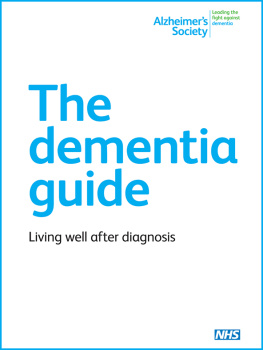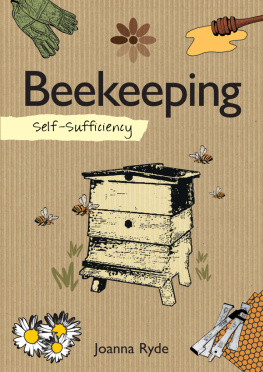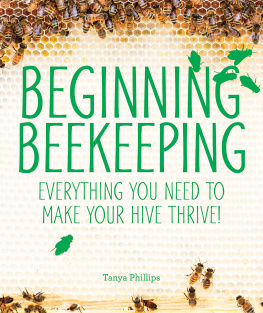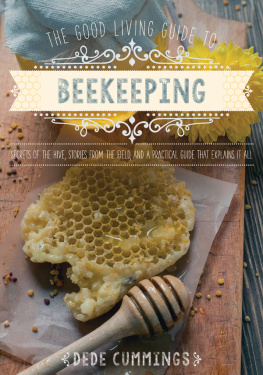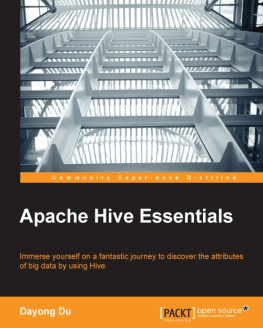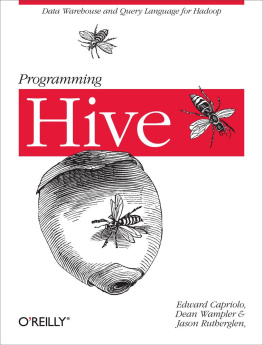HIVE
THE SIMPLE GUIDE
TO MULTIGENERATIONAL LIVING
HOW OUR FAMILY MAKES IT WORK
LISA M. CINI

HIVE
THE SIMPLE GUIDE TO MULTIGENERATIONAL LIVING
Copyright 2017 Lisa M. Cini.
All rights reserved. No part of this book may be used or reproduced by any means, graphic, electronic, or mechanical, including photocopying, recording, taping or by any information storage retrieval system without the written permission of the author except in the case of brief quotations embodied in critical articles and reviews.
iUniverse
1663 Liberty Drive
Bloomington, IN 47403
www.iuniverse.com
1-800-Authors (1-800-288-4677)
Because of the dynamic nature of the Internet, any web addresses or links contained in this book may have changed since publication and may no longer be valid. The views expressed in this work are solely those of the author and do not necessarily reflect the views of the publisher, and the publisher hereby disclaims any responsibility for them.
Any people depicted in stock imagery provided by Thinkstock are models, and such images are being used for illustrative purposes only.
Certain stock imagery Thinkstock.
ISBN: 978-1-5320-2063-6 (sc)
ISBN: 978-1-5320-2065-0 (hc)
ISBN: 978-1-5320-2064-3 (e)
iUniverse rev. date: 06/20/2017
Contents
Parkview
How to Stay Alive in The Hive
Field Notes
This book is dedicated to My Hive:
Great Grandma Gerline Lilly
John Miller
Elizabeth (Libby) Miller
Greg Cini
Jacob Cini
Adellina Cini
Callie Cini (the dog)
The Bees, too many to mention by name
Rapunzel (RIP), Snow White, Jasmine, Belle, Pocahontas & Cruella (AKA the chickens)
&
Piglet and Eeyore (the bunnies)
Matthew John Miller Little Matt
548 Forever in our hearts and on our minds
Behind the idea for this book is my hope that anyone who picks it up and reads it will see an opportunity to connect, and care for, their familyall different ages of their familyunder one roof. This idea is not new; my family just went back to what worked many years ago.
Its very important to me that this book adds great value and insight to your life. I think of it as cafeteria style. Pick what you like, turn to which chapter you need. Take whats valuable and enjoy the meal. Please try not to bite off more than you can chew, not in this book, nor in the idea behind it: Multi-generational living as a positive way to live with your familyyour kids, grandparents and great-parents, if youre fortunate enough to have them with you.
Heres how we designed the book to work for you. The beginning section, which we call Parkview, explains the tangible design decisions behind the whats, whys, and hows of our 4-Generational living experiment. This is your guide for setting up your own multi-generational family situation. Nothing is meant to be taken as an absolute; its just the way it works for us. Think of it as a recipe, you can always change it up. Everyone makes their pizza differently, this is our Cini Family Pizza recipe.
Next, youll see the section we named, How to Stay Alive in the Hive. In our social experiment, weve figured out some things that help us move forward, better and stronger. In this way, I see our living arrangement being much like a beehive, where the bees all have their unique purpose that contributes to a better, stronger hive. Sometimes, in our hive, we figured them out just through dumb luck, and sometimes through planning, and sometimes through pain. But it always was, and always will be, an experiment and just like taking a walk in the woods, we learned which berries we could eat and which we couldnt. The good news isno ones starved and the better news is everyones thriving.
Finally, youll find the section we call, Field Notes. If you were to stop by one day and visit us at our house, and sit around our dining room table, hang out together in our family room, spend a little time with Grandma (and Great-Grandma) Lilly, these are some things you might observe. Theyre the sweet things and the challenging things, the funny things and poignant things that really are the inner workings of our family.
Were learning as were living. If youre thinking of starting your own social experiment, these strategies are here to help start you out on more solid ground than we did, but our hope is youll see it as your own social experiment, and youll create your own design for thriving in your own hive.
PARKVIEW
CHAPTER 1
WHO WE ARE
My family history is a mix of immigrants.
Our roots run as far back as the first American settlers, on my French-English side, to the turn of the 20 th century, on my Irish-Italian-German-Jewish side. Yet, as far apart and dissimilar as our sides might seem, theres one thing that that ties us together: the bond to family.
I was taught, by all sides, that you should give more than you get, and while this started with family, it expanded outward to include neighbors, and then, country. Some might see this as an obligation, one that is heavy and often hard to bear, but I dont. I believe that one of the greatest gifts my ancestors gave me was a passion to put family first. Growing up, I heard stories about what this meant to the earlier generations, and sometimes, I saw it clearly, myself.
In Canton, Ohio. Sunday dinners were hosted by my paternal Italian grandmother.
Regardless of the economics of the time, her table was always full of food and people. All were welcome, and all showed up: cousins, friends, borders from the past, as well as the present. I heard that none of that changed much, when, even in midst of the Depression, my great-grandparents, Antonio and Assunta DeCosmo, shared all they had with their neighbors, so no one would suffer.
In southern West Virginia, close to the New River, my maternal grandparents lived on top of Hix Mountain and had their own orchards and gardens. Extreme hospitality sounds like it could be the name of a reality TV show, but it was actually my grandparents, John and Gerline Lillys manner of living. Their table was always full of wonderful food, and their door was always open to anyone passing through. Just as in my Italian grandmothers home, here too, it was a high offense not to eat what was given. The only difference? Grandma Della (Assuntas daughter) offered pizza as an appetizer, dandelion greens salad, sauted green, red and yellow peppers and sausage, spaghetti, and sliced oranges with olive oil and pepper. Compared to Grandma Lillys offering of meatloaf, fresh green beans, white beans with corn bread, loaded with butter, made in a cast iron skillet, and pies of every possible variety.
Though food was a large part of what it meant to care for someone, or show your love, it didnt stop there. You could always count on having more attention being lavished on you as guest in either of their homes than at a 5-Star resort hotel. Should you find yourself sick, youd receive better treatment than if you were in the intensive care unit at a major hospital. And though I was grateful to be nursed back, not just to full health, but to perfect health, part of me always feared what seemed to be the very real possibility of smothering to death under the weight of heavy wool blankets, or drowning to death by a third, necessary, cup of tea.
Growing up I thought this was all quite normal, and understood that loving each other meant supporting each otherin whatever way was needed.
So when I started my business 18 years ago and my daughter, Adellina, was ill, I didnt hesitate to ask my mother to move to Columbus to help. It was ideal, as it would provide a house for them to live in for as long as they desired. The kids would grow, and need less and less help, which was a perfect plan, because as my parents aged, theyd probably be able to help less. Not only would they not have to worry about what they could, or could not, afford to move into after my father retired, the house had room for family to visit comfortably.
Next page

